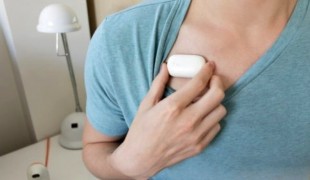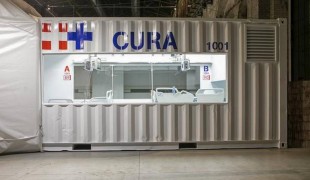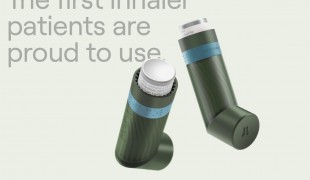- 8954
- 560
- 18
- 18
- 0
- Help Ukraine
About the solution
The innovation is called Epi-Case, a smartphone case that holds two vials of epinephrine and can administer medicine with the push of a button. The device is 22 millimeters thick, making it slightly bigger than your average smartphone case. Both ends are covered by caps which can be removed when an allergic individual is having a severe reaction. The case is then held on the person’s outer thigh and once a button is pushed, the needle inside delivers the medicine.
Samuel is a cell and molecular biology graduate from Ohio’s Kent State University. One day, he was thinking about the problem of self-medication, and this idea struck him.
Then he presented this idea Ariella Yager, an entrepreneur major, and Justin Gleason, who is in a masters program for architecture and environmental. They teamed up and launched Case.MD, a medical device company to develop emergency medicine tools.
The team already filed a utility patent through the United States Patent and Trademark Office and are waiting. They still have to get approval from the FDA.
The students already got funding from pitching competitions and crowdfunding, but they still have a long way to go.
Heat degradation is a concern in a smartphone context, since epinephrine is meant to be kept at room temperature.
“When it comes to manufacturing, we are going to integrate technology that is extremely viable in terms of isolation. High grade polymers that are already FDA approved. It’s going to be something that is a true medical device,” he says of the case.
The team is also making “drop tests,” to ensure the durability of the case. One of the next projects is to look into developing an asthma inhaler integrated into a smartphone case. Graska hopes to create a new standard in emergency medicine related to asthma and allergies. He says if he’d had these devices as a kid, it would have made a huge difference.
“People will know it’s your medicine, but it will be part of a device that you carry with you so it’s nothing out of the ordinary anymore,” the patient said.
Adapted from: http://bit.ly/2gbQj3r
More info: https://www.facebook.com/myCase.MD365/
This solution shall not include mention to the use of drugs, chemicals or biologicals (including food); invasive devices; offensive, commercial or inherently dangerous content. This solution was not medically validated. Proceed with caution! If you have any doubts, please consult with a health professional.
DISCLAIMER: This story was written by someone who is not the author of the solution, therefore please be advised that, although it was written with the utmost respect for the innovation and the innovator, there can be some incorrect statements. If you find any errors please contact the patient Innovation team via info@patient-innovation.com
-
-
664
-
0
-
9774

Patient develops wearable for Asthma
VENTILATION
CAREGIVING
Asthma
Assistive Daily Life Device (to help ADL)
Treatment/Surgical device
App (Including when connected with wearable)
Pharma
Improving respiratory function
Promoting self-management
Manage Medication
Preserving Organ Function
To implement a diagnostic tool
Alleviating Allergies
To improve Treatment/Therapy
Preventing (Vaccination, Protection, Falls, Research/Mapping)
Caregiving Support
General and Family Medicine
Immuno-allergology
Pneumology
Australia
-
-
-
291
-
0
-
3818

Multi-disciplinary team creates healthcare units from converted shipping containers
CAREGIVING
Covid19
Treatment/Surgical device
Sore throat
Fever
Fatigue
Difficulty breathing deeply
Nasal congestion
Sinus pain or pressure.
Shortness of breath
Improving respiratory function
Manage Medication
To improve Treatment/Therapy
Preventing (Vaccination, Protection, Falls, Research/Mapping)
Caregiving Support
General and Family Medicine
Infectious Diseases
Pneumology
Public Health
Italy
-
-
-
404
-
0
-
5020

Purcell – The drive to solve the problems with aerosolized drug delivery for a best friend.
VENTILATION
CAREGIVING
Asthma
Treatment/Surgical device
Fatigue
Difficulty breathing deeply
Improving respiratory function
Enhancing health literacy
Promoting self-management
Manage Medication
Preventing (Vaccination, Protection, Falls, Research/Mapping)
Raise awareness
Caregiving Support
General and Family Medicine
Infectious Diseases
Pediatrics
Pneumology
United Kingdom
-
 en
en